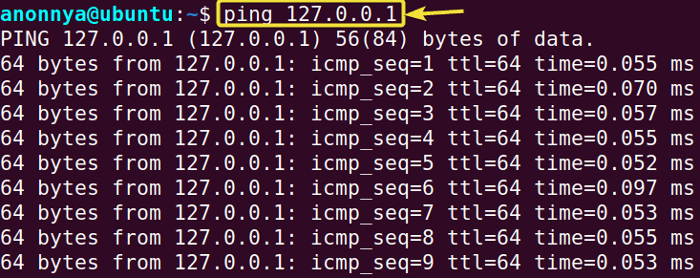There are so many terminologies we come across while working in the tech field. Localhost is one of them. This is an important term when we consider our computer system as a part of some network. In this article, you will learn what is localhost in a computer network, its functionalities as well as its usages.
What is Localhost?
In Computer Network, localhost is the server currently operated by the user. In other words, localhost indicates the user’s own computer. Calling the localhost connects the server to itself instead of making communicating with other computers in the network. For any server, the connection request to “127.0.0.1” or localhost will be sent back to the server itself.
IP Addresses
Each device on a network has a unique numerical address to establish successful connections within the network. This address is called the IP address or, Internet Protocol Address because it uses the Internet Protocol for communication. It enables us to identify and locate a host in a network. The two main categories of IP addresses are IPv4 and IPv6. The convention is to write these addresses in four or eight sets of numbers separated by dots(.).
What is Loopback?
Loopback is a term that refers to establishing a connection to the same computer from which the connection was requested. It uses a virtual network interface to make such connections. This loopback interface is assigned to the reserved “127.0.0.1” IP address for every server. Also known as localhost, when some data is sent to the “127.0.0.1” IP address it is transmitted to the user’s own machine. It is an essential tool for network testing and development.
Working Mechanism of Localhost
In computer networks communication is the basic component. We know the IP addresses of devices available on some networks are responsible for building connections in a network system. These IP addresses travel within the data packets sent and received between two servers. Upon verifying the desired addresses from these packets a proper connection is built.
The localhost works in a similar manner except for the data must be sent to the IP address “127.0.0.1”. When a connection is made with the localhost, the request is forwarded to the loopback interface which routes requests to the local server. The local machine acknowledges the request and sends back a response to the user again using the loopback interface. Hence, a proper connection between the server to itself gets established.
Uses of Localhost
The localhost has multiple purposes. It has a wide range of applications in the testing and development of network services. I have described some of the frequent uses below.
A. Network & Speed Testing
Users can test their computer network without any kind of internet connection. All one has to send a request to the localhost and monitor the connection attributes. By monitoring the transmission a user can ensure that the system is working properly. Users can also test the speed of the requests without the internet from this communication.
B. Web Application/Program Testing
Web developers can use the localhost as a testing tool for their applications. Developers must upload their application files on the webserver to build a website. But without any real-time test sharing these resources can be harmful. The localhost contributes to the real-time testing of web applications. Developers can host the website files on their system and make them available via localhost. Then, accessing the localhost from the system’s browser enables the developers to experience live website testing without sharing the files with the outside world.
C. Site Blocking
The localhost can block the network from entering unwanted websites. In general, system admins use the loopback to stop the system from connecting to harmful and restricted sites. In a particular server, they change the IP address of the restricted site to IP address “127.0.0.1”. This routes the connection back to the system and blocks it from entering the malicious site.
Example: Testing Local Server
Sending a ping request to localhost you can establish and check the network on your system. For this, you can use the localhost keyword or the IP address “127.0.0.1” along with the ping command. Follow the instructions below to complete the task.
Steps to Follow >
➊ At first, go to the Ubuntu Terminal.
➋ Type any of the following commands in the command prompt:
ping localhostOR,
ping 127.0.0.1➌ Press ENTER.
Output >
In the given image, you can see that I have displayed various attributes of the local network. These attributes include data packet size, transmission time, etc for speed testing. 
Conclusion
In this article, I have illustrated the concept of the localhost along with the basic ideas of IP addresses and Loopback. It is a significant technique that allows developers and system admins to test and secure the computer network they operate on. Moreover, it is a vital tool for web developers as well. I hope learning the basics of localhost will improve your journey in the technological field.
Similar Readings
FUNDAMENTALS A Complete Guide for Beginners






